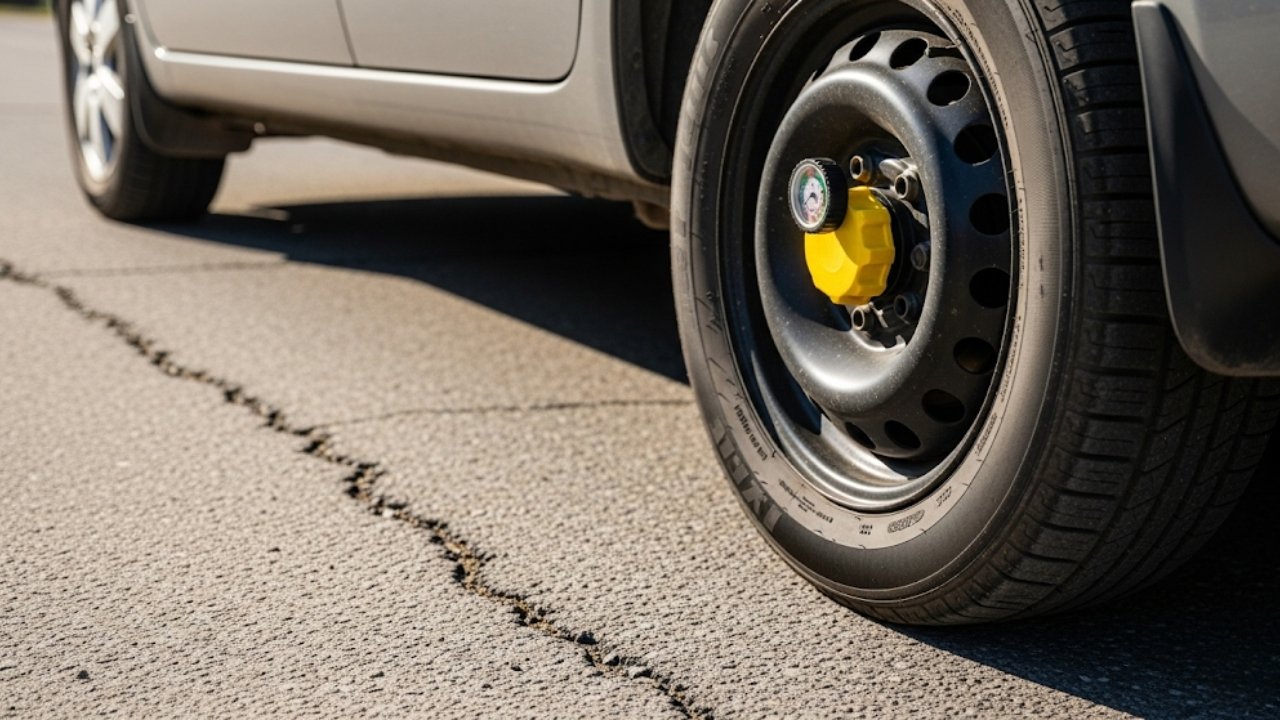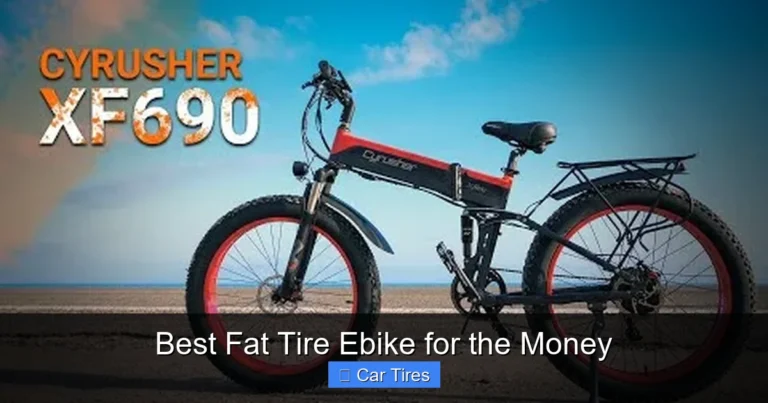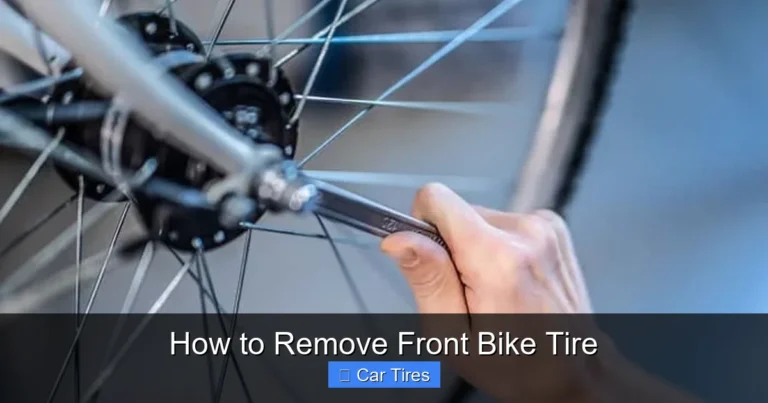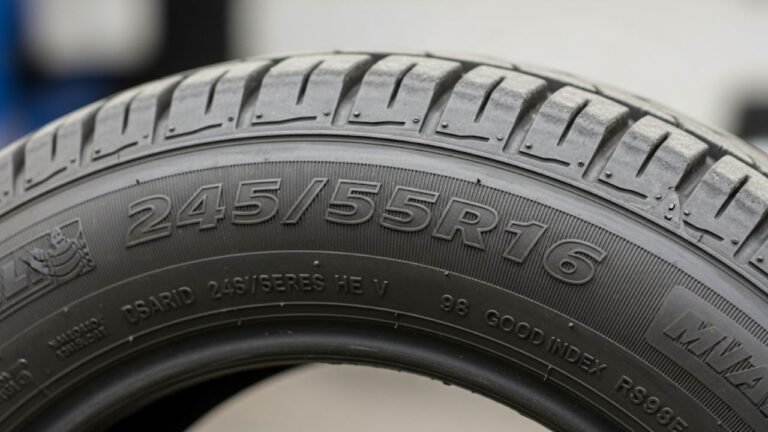How Long Can I Drive on a Spare Tire?

It was a humid Tuesday afternoon. I was already late for a family gathering when suddenly—bang!—the car started wobbling. I pulled over, heart racing, and saw my front tire was flatter than a pancake. Luckily, I had a spare tire in the trunk. But as I drove away on it, a question hit me: how long can I drive on a spare tire before it becomes a danger?
If you’re reading this, you’re probably in the same situation—or just trying to be smart and plan ahead. Either way, you’re in the right place. This guide will help you understand not just the how long, but also the how safe, what kind, and what happens if you push it too far.
In This Article
- 1 Understanding Spare Tires: Not All Are the Same
- 2 So, How Long Can I Drive on a Spare Tire, Really?
- 3 Why You Shouldn’t Push Your Spare Tire to the Limit
- 4 Designed to Be Temporary: Here’s Why
- 5 ️ Real Talk: Can I Use My Spare for a Few Days?
- 6 Tips for Driving Safely on a Spare Tire
- 7 Can I Drive Differently Based on the Weather?
- 8 When Should You Replace or Retire Your Spare Tire?
- 9 Keep a Spare, But Keep It Ready
- 10 ️ Can You Drive Long Distances on a Full-Size Spare?
- 11 How to Know If Your Spare Tire Is Still Safe
- 12 Real Talk Recap: What’s the Safe Limit?
- 13 Bullet Point Recap
- 14 ❓ Frequently Asked Questions (FAQs)
- 14.1 1. Can I drive 200 miles on a donut spare?
- 14.2 2. How fast can I go on a spare tire?
- 14.3 3. What if I drove too far on a donut tire?
- 14.4 4. Can I reuse a spare tire?
- 14.5 5. Can I use a donut on the front wheel?
- 14.6 6. Do spare tires expire?
- 14.7 7. Can I buy a second spare for long trips?
- 14.8 8. Can I patch a donut tire?
- 15 Final Thoughts: Spare Tires Save Lives—but Don’t Treat Them Like a Full-Time Friend
Understanding Spare Tires: Not All Are the Same

Types of Spare Tires:
-
Donut/Space-Saver Spare
-
Small, compact, and temporary
-
Usually found in small or mid-size cars
-
-
Full-Size Spare
-
Matches your regular tire in size and tread
-
Often used in trucks and SUVs
-
-
Run-Flat Tire
-
Technically not a spare, but can keep running after a puncture
-
-
Folding/Collapsible Spare
-
Rare but exists—requires inflation before use
-
If your car came with a donut spare, then it’s likely not meant to be driven on for more than 50–70 miles at speeds not exceeding 50 mph. Meanwhile, full-size spares can be treated just like your regular tires.
So, How Long Can I Drive on a Spare Tire, Really?
Let’s address the big question: How long can I drive on a spare tire without compromising safety?
The honest answer is: It depends. But most automakers and tire experts say:
| Type of Spare Tire | Max Distance | Max Speed | Recommendation |
|---|---|---|---|
| Donut/Space Saver | 50–70 miles | 50 mph | Replace ASAP |
| Full-Size Spare | Unlimited (if new) | Normal speed | Use like regular tire |
| Run-Flat Tire | ~50 miles | 50 mph | Repair/replace tire soon |
So, if you’re on a temporary donut spare, don’t think of it as a solution—it’s a lifeline. Enough to get you home or to a repair shop. Not enough for a road trip to Grandma’s.
Why You Shouldn’t Push Your Spare Tire to the Limit
Let me be real with you—I once drove 120 miles on a donut tire. It was a mix of desperation, confidence, and, honestly, stupidity. And yes, I paid the price when it shredded on the highway in the middle of nowhere.
Here’s what happens when you ignore the limits:
-
Poor handling, especially at high speeds
-
⚠️ Brake performance decreases
-
Increased wear on other tires
-
Higher risk of blowouts
Think of your spare tire like crutches after a leg injury. You can walk with them, but would you run a marathon?
Designed to Be Temporary: Here’s Why
You might wonder, why don’t they just make all spare tires like regular ones? Well, car manufacturers are trying to save:
-
Weight (which improves fuel efficiency)
-
Space in your trunk
-
Cost of manufacturing
But there’s a price: these spares are not meant to be permanent.
Donuts, for example, have:
-
Less tread
-
Smaller diameter
-
Narrow width
-
Weaker sidewalls
All of these reduce stability and safety. That’s why manufacturers boldly label them with warnings like “TEMPORARY USE ONLY.”
️ Real Talk: Can I Use My Spare for a Few Days?
You might get away with it. Many people do. But just because the car moves doesn’t mean it’s safe. If you’re still wondering how long can I drive on a spare tire, here’s the honest breakdown from someone who’s been there:
-
A few hours? Okay
-
Overnight until the shop opens? Reasonable
-
A week of commuting to work? Risky
-
A weekend trip? Definitely no
Every minute you drive on a spare tire, you’re putting strain on your car’s suspension, alignment, and braking system. It’s like dancing with a twisted ankle—eventually, something gives.
Tips for Driving Safely on a Spare Tire
If you absolutely have to drive on a spare tire, here are a few safety nuggets from experience:
-
Drive slow. Never go over 50 mph.
-
Avoid highways if possible—more speed = more danger.
-
Brake early. Stopping distance will be longer.
-
⚙️ Don’t accelerate hard or take sharp turns.
-
Check tire pressure. Even spares lose air.
A donut is like a paper umbrella in a storm—it might work for a bit, but you wouldn’t want to rely on it for long.
Can I Drive Differently Based on the Weather?
Oh yes! Weather changes everything. I once got caught in a thunderstorm on a donut tire. Not fun.
-
️ In rain: Spares have limited tread and can easily hydroplane
-
❄️ In snow/ice: Temporary tires are not made for winter conditions
-
☀️ In summer: Heat can cause more air pressure loss and weaken rubber
So if the weather’s bad? Try your best to avoid driving at all on a spare.
When Should You Replace or Retire Your Spare Tire?
Here’s something many people overlook—spare tires have expiration dates too. Even if you never use it, your spare can become unsafe over time. Rubber degrades, especially in hot climates or if it’s exposed to moisture and trunk heat for years.
⏳ Signs it’s time to replace your spare:
-
The tire is over 6 years old, regardless of use
-
You see cracks in the sidewall or tread
-
It’s missing pressure often or refuses to inflate
-
The tread is worn down—even if it was never on the road
Take a look at the DOT code stamped on your tire. The last four digits tell you the week and year it was made. For example, “1018” means the 10th week of 2018.
So if your spare is just sitting there aging like an old loaf of bread, it’s not going to help you in a real emergency.
Keep a Spare, But Keep It Ready
Treat your spare tire like a backup phone charger. You don’t think about it much, but when you need it—you really need it. So it better work.
✅ A few simple tips:
-
Check the air pressure monthly (usually 60 PSI for donuts)
-
Keep a tire inflator or pump in the trunk
-
Store it in a dry place—moisture = rubber rot
-
Don’t pile heavy tools or groceries on it—can warp the rubber
And don’t forget your jack and lug wrench. I’ve heard too many stories of people stuck on the side of the road with a perfect spare but no tools to use it.
️ Can You Drive Long Distances on a Full-Size Spare?
Now here’s some good news—full-size spare tires are just like your regular ones. So technically, you can drive as long and as far as you want on it. But—and this is important—only if it’s the same size, tread pattern, and inflation level as your other tires.
What most people don’t realize is that even a minor size mismatch can mess with your car’s:
-
ABS and traction control
-
Differential and alignment
-
Overall tire wear
So if your full-size spare is older or not rotated regularly, use it short-term and replace it with a proper match as soon as possible.
How to Know If Your Spare Tire Is Still Safe
Don’t just trust the looks. Even a shiny, never-used spare tire can be hiding problems. Here’s a mini checklist I use:
✅ Spare Tire Safety Checklist:
-
Date of manufacture less than 6 years ago?
-
No visible cracks, bulges, or rot?
-
Tread depth over 3/32”?
-
Proper PSI based on your car manual?
-
No signs of dry rot or hardening?
If you said “no” to even one of those, it’s time for a replacement. Better $80 now than $800 in damages later.
Real Talk Recap: What’s the Safe Limit?
Let’s hammer this in. If you ever ask again, how long can I drive on a spare tire, just remember:
-
Donut spare = Max 50–70 miles at under 50 mph
-
Full-size spare = Unlimited, if in good condition
-
Run-flat tire = Around 50 miles at 50 mph
-
Avoid highways, long trips, and wet roads
-
Replace or repair the original tire ASAP
Bullet Point Recap
-
Donut tires are temporary—don’t go over 70 miles.
-
Full-size spares are safer but must match existing tires.
-
Driving on a spare affects braking and stability.
-
Always check your spare regularly—even unused ones degrade.
-
Spares are for emergencies, not long-term solutions.
-
Keep basic tools, inflators, and a flashlight in your car.
❓ Frequently Asked Questions (FAQs)
1. Can I drive 200 miles on a donut spare?
No, and please don’t try. You’re pushing past the safe limit and risking a blowout.
2. How fast can I go on a spare tire?
Never exceed 50 mph on a donut. Full-size spares can go normal speed if in good shape.
3. What if I drove too far on a donut tire?
Get it checked ASAP. You may have damaged the wheel, brakes, or alignment.
4. Can I reuse a spare tire?
Yes, if it’s still in good condition and not too old. But it’s not meant for multiple uses over long periods.
5. Can I use a donut on the front wheel?
It’s not ideal, especially in front-wheel-drive cars. If possible, move a full tire to the front and put the spare on the rear.
6. Do spare tires expire?
Yes. After 6–10 years, the rubber weakens—even if unused.
7. Can I buy a second spare for long trips?
Yes! Especially for off-roaders and long-distance drivers. Just ensure it’s the correct size and stored safely.
8. Can I patch a donut tire?
Most manufacturers don’t recommend repairing donut spares. Replace them if damaged.
Final Thoughts: Spare Tires Save Lives—but Don’t Treat Them Like a Full-Time Friend
Driving on a spare tire is like walking on crutches—you’re still mobile, but you’re not fully safe. Whether it’s a compact donut or a full-size spare, it’s important to understand its purpose and limits.
I’ve made the mistake of treating my spare like a regular tire—and I’ve learned the hard way. You don’t have to. Use your spare to get help, not to get by.
Take care of your tires like you take care of your shoes—they carry you everywhere. And the better you treat them, the safer every journey becomes.






